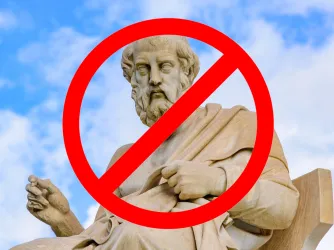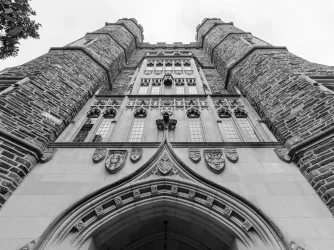Table of Contents
FIRE calls on Hamline University to reinstate art history instructor dismissed for showing medieval depiction of Muhammad

Minnesota’s Hamline University has betrayed its commitment to “embrace” free expression, including potentially “unpopular and unsettling” ideas. In clear violation of faculty academic freedom, Hamline nonrenewed an art history instructor for the in-class display of artwork depicting the Islamic prophet Muhammad. In dismissing the instructor, the university reportedly said “respect for the observant Muslim students in that classroom should have superseded academic freedom.”
As PEN America said last week, this is “one of the most egregious violations of academic freedom in recent memory.”
Hamline reportedly justified dismissing the instructor based on concerns about “Islamophobia,” as many Muslims believe Muhammad should not be depicted in any way. However, blanket bans on displaying pedagogically relevant material are not acceptable at a university that commits to academic freedom.
TAKE ACTION: TELL HAMLINE TO REINSTATE THE INSTRUCTOR
FIRE wrote Hamline urging it to reinstate the instructor. As we said our letter:
Hamline’s nonrenewal of the instructor for showing an image of Muhammad violates the instructor’s pedagogical autonomy—protected by basic tenets of academic freedom—to determine whether and how to introduce or approach material that may be challenging, upsetting, or even deeply offensive to some. An instructor’s right to navigate difficult material—like whether to display a historical painting of Muhammad when many Muslims believe Muhammad “should not be pictured in any way”—is well within Hamline’s commitment to protect academic speech that may “potentially be unpopular and unsettling.” Hamline’s policy also reflects our nation’s broader commitment to academic freedom. In warning against “laws that cast a pall of orthodoxy over the classroom,” the Supreme Court called academic freedom “a special concern to the First Amendment” and a principle “of transcendent value to all of us and not merely to the teachers concerned.”
Although Hamline is a private institution not bound by the First Amendment to protect faculty academic freedom, it makes clear commitments to academic freedom that faculty will reasonably interpret to align with the First Amendment’s protections. Academic freedom requires that faculty members — not administrators or students — decide what materials to teach and how to teach them.
In the First Amendment context, courts have made clear that expression, “however repugnant,” is protected if “germane to the classroom subject matter."
Academic freedom requires that faculty members — not administrators or students — decide what materials to teach and how to teach them.
And there can be no justifying nonrenewal on theory that the instructor’s display of the image of Muhammad constitutes unprotected discriminatory harassment, which must meet the standard determined in Davis v. Monroe County Board of Education. According to this standard, discriminatory harassment is conduct, including expression, that is (1) unwelcome, (2) discriminatory on the basis of a protected status like race or gender, and (3) “so severe, pervasive, and objectively offensive that it can be said to deprive the victim[] of access to the educational opportunities or benefits provided by the school.”
Though it was not necessary, the instructor reportedly warned students before showing the image, to allow Muslim students to look away if they chose. Thus, display of the image may have been unwelcome to some but was not discriminatory. Nor was it “severe” or “pervasive,” as the instructor showed the image only once and for a clearly pedagogical reason — not to direct the image at any individual. If Hamline construes the instructor’s pedagogical choice as sufficient to deprive a reasonable person of the university’s educational opportunities or benefits, any subjectively offensive teaching of pedagogically relevant material could meet Hamline’s impermissibly low bar to constitute harassment.
Additionally, dismissing this instructor for pedagogical choices is problematic enough, but Hamline’s actions have also created an impermissible chilling effect among all faculty, who may choose to censor their teaching rather than face punishment. This is particularly so for adjunct faculty like this instructor, who do not enjoy the same due process protections as tenured faculty. To avoid a chilling effect, universities like Hamline must adhere to their commitments to free expression. The breathing room afforded classroom discussion depends increasingly on institutions’ in-practice commitment to uphold their promises of academic freedom, and to zealously guard against signaling that particular discussions, language, or materials may risk nonrenewal.
We call on Hamline to abide by its academic freedom policies by immediately reinstating the instructor and reaffirming to faculty that it will protect their academic freedom.
The Foundation for Individual Rights and Expression is a free speech charity that defends the rights of students and faculty members — no matter their views — at public and private universities and colleges in the United States. If you are a student or a faculty member facing investigation or punishment for your speech, submit your case to FIRE today. If you’re faculty member at a public college or university, call the Faculty Legal Defense Fund 24-hour hotline at 254-500-FLDF (3533). If you’re a college journalist facing censorship or a media law question, call the Student Press Freedom Initiative 24-hour hotline at 717-734-SPFI (7734).
Recent Articles
Get the latest free speech news and analysis from FIRE.

Texas A&M to philosophy professor: Nix Plato or be reassigned

Morgan State says cut the cameras, stop the presses

The worst of both worlds for campus free speech


